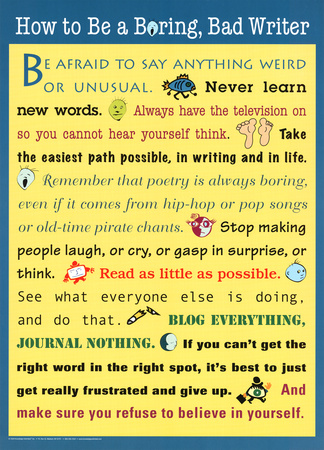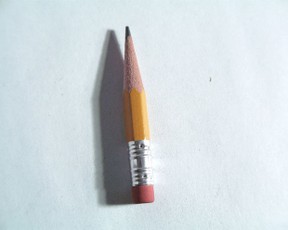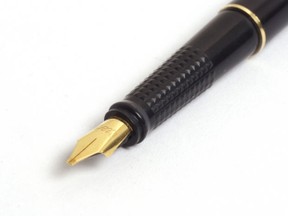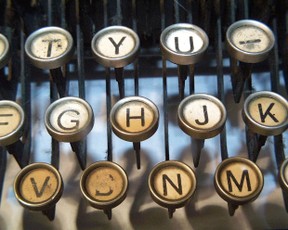It is said that we all have a novel in us. I'm not sure if that's entirely true, but I do think lots of people have flashes of inspiration that could be turned into a good novel, as long as that idea is honed, shaped and crafted properly.
Now, of course, I'm not suggesting that the following is the only way to write a novel. In fact, I'm not even saying that it's the best way to write a novel. Every writer has to find a process that works for him or her. It's different strokes for different folks.
However, this is a method that has worked well for me, and if you're new to writing or have simply became stymied by a particular story, you might find this technique very helpful.


 As I've already mentioned, there's no one way to write a novel; no right or wrong method. So, these are just a few tips and techniques that have worked well for me.
As I've already mentioned, there's no one way to write a novel; no right or wrong method. So, these are just a few tips and techniques that have worked well for me.


 Make a list of the
Make a list of the 

 This may seem like we're flitting back and forth between plot and characters, and that's because we are.
This may seem like we're flitting back and forth between plot and characters, and that's because we are.
 This time, you're aiming to turn each paragraph of your summary, which will now be approximately five paragraphs in length, into a page.
This time, you're aiming to turn each paragraph of your summary, which will now be approximately five paragraphs in length, into a page. Be sure to keep hold of the long detailed description you wrote for each character but what you're about to do now will create the 'bible' that helps you craft the character's moves throughout the novel.
Be sure to keep hold of the long detailed description you wrote for each character but what you're about to do now will create the 'bible' that helps you craft the character's moves throughout the novel.

 Okay, so you've got a fairly detailed idea of what happens within the story - some five to eight pages, I'd imagine. So, now's the time to start breaking the events up into scenes.
Okay, so you've got a fairly detailed idea of what happens within the story - some five to eight pages, I'd imagine. So, now's the time to start breaking the events up into scenes.




 There you have it, you're now ready to rock 'n' roll. Naturally, this is not to suggest that the writing of the first draft will be completely plain sailing
There you have it, you're now ready to rock 'n' roll. Naturally, this is not to suggest that the writing of the first draft will be completely plain sailing 




 How to Avoid College Debton 07/31/2014
How to Avoid College Debton 07/31/2014
 Was Charlotte Bronte Jealous of her Sister Anne?on 07/15/2014
Was Charlotte Bronte Jealous of her Sister Anne?on 07/15/2014
 Whose Side is Cancer Research UK on?on 07/06/2014
Whose Side is Cancer Research UK on?on 07/06/2014
 A Plot Summary of Electra by Sophocleson 07/05/2014
A Plot Summary of Electra by Sophocleson 07/05/2014



Comments
Thanks, Mira. I really think that if a story is bursting to get out of you, you should definitely do it - even if that means not taking a methodical approach, because it won't necessarily work for everyone or for every type of novel. The really important thing is to write.
You were so right about my novel calling me siren-like :). I have decided to do something with it, after all. Your approach is so methodical, I can see why it yields results in a timely fashion. I can also see it working plot-wise. I am terrible when it comes to imagining a plot. I tend to write in scenes that are loosely interconnected and do build to something; I can't imagine a real plot. I don't know enough about how to hone that skill. Reading does help, and I do take mental notes. And, in fact, this article helps a lot. I've read it carefully a second time and it was worth it.
I'm glad I came across this. I work more or less the way you do, adding layers and complexity, but I'm pretty haphazard about it. I think it would help if I worked with the summary and characters in a more formal way. A novel I'm just beginning to work on has a basic idea and the characters, but nothing inbetween.
Thank you for your very kind words, Frank
And thanks to you too, Jennifer. It's definitely a take-the-bits-you-like;-leave-what-you-don't kind of plan, I don't think it's a method that will work for everybody or for every novel. But I'm really glad there are some things here you've found of value. I certainly find character sketches helpful, but I can't promise they still won't go off on their own merry way! Sometimes it's good to just let them do whatever it is they seem to want to. They might take you somewhere you never thought of and improve the story. If not, you can always, as you say, rein 'em back in. Good luck with it!
Fascinating! I've been working on my first novel for several months. Can't say I've followed your plan, but some of the points (list of characters, ideas for scenes, pieces of dialog) are things I wrote down. I didn't try a character sketch - maybe I should have, mine keep going off in unexpected directions! Of course I'm happy that they seem to be alive, but sometimes I think I should rein them in a bit.
This article is excellent. I have read it once and got ideas already. I will be re-reading tomorrow.
Hello, Mira. Thanks for your kind comments. I'm glad you found some of the suggestions useful.
You might find, after letting it sit for a while, that you come back to your novel - something may suddenly click into place and you realize what needs to be changed or done differently. After working on it (albeit sporadically) for that long, my sense is that it's going to keep calling to you Siren-like. Maybe the initial idea will morph into a new novel.
When I'm ghostwriting, it varies depending on how firm the client's ideas and plots are in the first place. Typically though, it's a month or two to get the first draft ready. From there, the client may want to edit it himself/herself, or we might spend a fortnight or so tweaking and revising.
Wow, there are some great suggestions in here for getting organized. I particularly liked the idea of making a map of the scenes. That way you can see how interlinked they are, which to drop, etc.
I've been working on a novel, on and off, for 4 years now. I've learned a lot but decided not to write this one after all. How long does it take you to ghostwrite a novel in the way you described??
Thanks Dustytoes. I'm glad it's been interesting to you.
I say, if you have an idea, go ahead and write it. You don't have to follow the process above, if it doesn't suit your style - but, as long as you've got the time, you're not losing anything by getting it down. It might not end up quite as you'd hoped, but you'll be learning. Or it might end up better than you'd imagined!
Like many people I have occasionally thought - I should write a book! However, also like many people I have no idea about all the actual work that goes into it. Now I have a glimpse and I found this page most interesting.